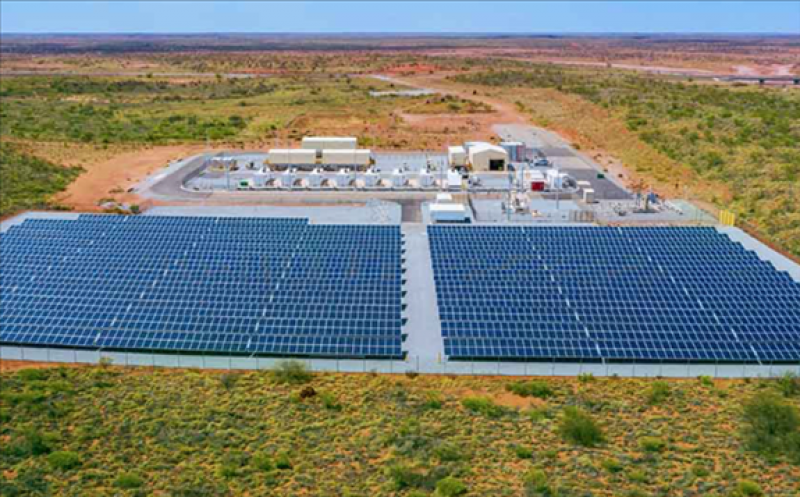Horizon Power, Western Australia's regional and remote energy utility, and PXiSE Energy Solutions have collaborated on a first-of-its-kind hydrocarbon-free power grid that enabled a town to power itself entirely with fossil-free distributed energy resources (DERs).

In the world's first known instance of solar-plus-batteries supplying 100% of a community's power, which has similar operational challenges of a large regional grid, the remote Western Australia town of Onslow was powered without the use of any fossil fuel or hydropower-based systems for 80 minutes.
The landmark event serves as a successful demonstration of how advanced microgrid control technology and a distributed energy resources management system (DERMS) can empower communities to embrace increasing amounts of renewable energy without experiencing grid stability issues. For further information see the IDTechEx report on Distributed Generation: Off-Grid Zero-Emission kW-MW 2020-2040.
In a project that was nearly two years in the making, Horizon Power commissioned PXiSE to deploy the distributed energy resource management system (DERMS) in Onslow. With the PXiSE-designed DERMS and Microgrid Controller in place, Horizon Power's engineers have been monitoring Onslow's grid in real-time, managing generation from the town's many distributed solar power sources and a traditional, gas-fired power plant.
In the recent demonstration, the town was served by approximately 700 kW of domestic solar from over 260 customers; 600 kW of utility solar; a grid formed by a power station battery storage system; and solar smoothing support from a zone substation battery. The Microgrid Controller, in coordination with the station's power line controller, managed the transitions smoothly, ensuring steady-state frequency and voltage. The DERMS managed the residential solar and provided predictive analytics for solar/weather conditions, informing the transition criteria.
The breakthrough was the exclusive use of household rooftop and utility solar assets, which are non-dispatchable energy sources, and precisely coordinating that with energy storage resources and load and weather forecasts to provide stable, continuous, high-quality power to a grid. The town did not need to draw power from its fossil-based plant, nor is there any hydropower in the region. Such a model could be applied in any area to go towards 100% renewable.
Horizon Power CEO Stephanie Unwin said, "Renewable energy solutions are front of mind, and we have very clear goals for our energy future. This technical functionality developed in Onslow continues to lead the industry to overcome the barriers to increased rooftop solar installation, which has been shown to reduce energy costs for our regional customers."
"This is a significant milestone for energy control technology and renewable energy, with broad applications for the world at large," said PXiSE Energy Solutions CEO Patrick Lee. "The DERMS and Microgrid Controller-facilitated hydrocarbon-free period in Onslow demonstrates the possibility for certain communities to run solely on solar plus battery storage. We look forward to achieving more energy milestones with Horizon Power, and we're thankful to the residents of Onslow, whose home solar installations were a critical element in enabling a fully renewable energy-powered grid."
The project with Horizon Power in Onslow more generally will enable the town to operate a much greener grid. Aided by PXiSE's DERMS and Microgrid Control technology, the Onslow Power Project is projected to deliver cleaner energy to Onslow with fossil fuel savings of about 820 tonnes of CO2 emissions per year. The project serves as a sustainable energy model for isolated and island communities that lack access to geothermal or hydroelectric resources. Onslow's hydrocarbon-free experience shows that it is possible for such remote communities to operate entirely on a solar-plus-stored-energy model with a mix of customer and utility owned assets.